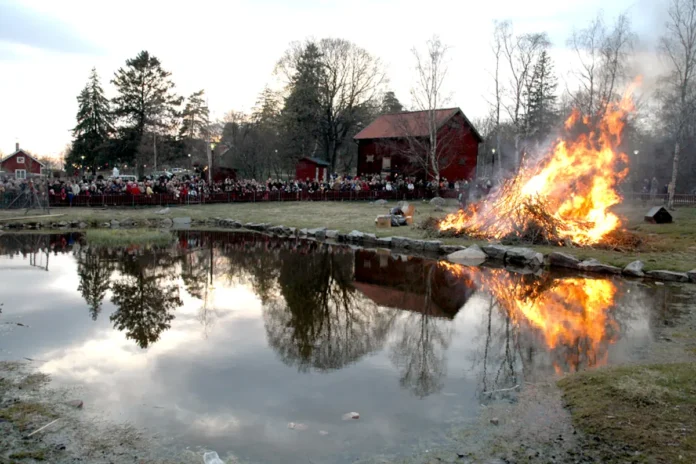Valborg, or Walpurgis Night, is one of Sweden’s most cherished traditions, celebrated annually on April 30th. This vibrant event marks the arrival of spring and offers visitors a unique glimpse into Swedish culture, blending historical roots with modern festivities.
The history behind Valborg
Valborg’s origins trace back to Germany and the Middle Ages, where it was named after Saint Walpurga, an 8th-century missionary canonized on May 1st. Worshippers believed witches gathered on Walpurgisnacht, so they lit bonfires to ward off evil. In Sweden, farmers lit fires to protect livestock from predators, making the tradition practical.
Over time, Valborg transitioned from its pagan and agricultural roots to a celebration of nature’s renewal, symbolizing the end of winter and the hopeful beginning of summer.
Modern-day traditions
Swedes celebrate Valborg as a festive occasion with bonfires, choral singing, and community gatherings. They light bonfires to symbolize clearing away winter’s remnants. Choirs perform traditional spring songs and deliver speeches that welcome the warmer days ahead.
In university towns like Uppsala and Lund, this tradition takes on a particularly lively character. Students celebrate with champagne breakfasts, picnics in parks, and spirited activities like rafting competitions. Skansen hosts a famous Valborg event in Stockholm, with traditional music, speeches, and city views.
Why experience Valborg?
Valborg allows tourists to immerse themselves in Swedish culture and community spirit. Sweden loves nature and community, whether you are at a park bonfire or in Uppsala for student festivities. In essence, it’s a chance to sing along with locals, savor traditional snacks like grilled sausages (korv), and witness centuries-old traditions come alive.
Mark your calendar for April 30th and join Swedes in celebrating Valborg—a night where history meets festivity under the glow of springtime bonfires.




